Ornamental Gardens
Are you look for some recurrent plants to add together to your garden this fall ? There are many options to prefer from , reckon on your mood . In this article , horticulture expert Liessa Bowen looks at some of her favorites , with name and pictures of each !
content

Perennials are plants thatgrow and flower year after class . Some species develop in full sun , while others favour part sunshine or spook . Some do well in moist stain , and others thrive in dry soils . There are perennial earth covers and tall , vigorous bush .
Most are dauntless and long - lived . Both those unexampled to perennial gardening and experienced , avid nurseryman with plant industrial plant will find stirring from these 31 fall perennials you could found before wintertime ’s cold exercise set in .
Planning a Fall Perennial Garden
Before stab , select plants brave to your climate and set them in their best-loved conditions . If you ’re willing to go with native works , native perennial areproven to support pollinatorsand local wildlife .
Once your plants are well - established , you will be pay back with ahardy , dispirited - maintenanceflower garden . Whatever type of plant you are looking for , there ’s in all probability a perennial for you .
Do a bit ofadvance planningand ask yourself the survey doubt :
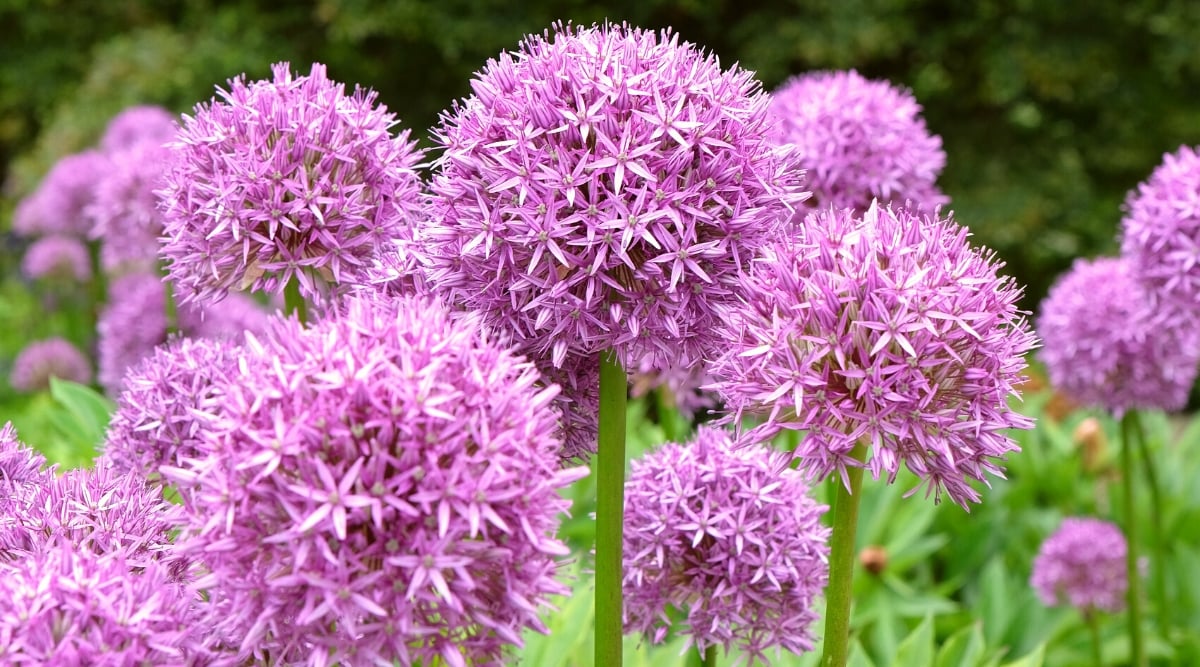
Once you know the answers to these questions , start looking at plants to take your garden ! Plant them on a cool day and thoroughly irrigate them after put them in the ground . Many plants will profit from a bed of mulch to help protect them from temperature extremes through the winter months . Mulch in the summer can help keep the ancestor moist and tighten weed ontogeny .
Allium, Ornamental Onion
Scientific Name : genus Allium caeruleum
Allium caeruleum , or ornamental onion , blooms in late give through early summertime . Large earth - like , pale royal blooms atop marvelous stems . The onion plant - alike leafage often wry and shrivel up shortly before blossoming , so the flower stalk appears to come out directly from the earth with no leaves . Plants are powerfully onion plant - scented when crushed andresistant to deerand rabbit . Their striking and showy flowers attract butterflies and other dirt ball .
Alliums grow well in juiceless to slimly damp territory . Soils should be fat but very well - debilitate . Add some sand if necessary to ameliorate drainage , as allium electric-light bulb are prostrate to rot if continually wet . Plant in full sun for sound growth and blooming .

Basket-Of-Gold
Scientific Name : Aurinia saxatilis
Basket - Of - Gold , sometimes ring Yellow Alyssum , is a low - grow fall perennial that makes an excellentground cover . It grows well in a localisation with full sun and flaxen , well - drained stain . In area with hot summer , this industrial plant appreciates a bit of afternoon tincture , or the leaves may die back and appear rather scraggly . If this happens , cut heavily after bloom to further better leaf development .
Basket - of - Gold blooms in the spring with a great deal of small bright yellow-bellied heyday . Leaves are mere , oblong , and argent fleeceable . It is resistant to drought and juiceless dirt and would make a dainty addition to a rock garden or along edges and border .

Aster ‘Wood’s Purple’
Scientific Name : Aster ‘ Wood ’s Purple ’
The ‘ Wood ’s Purple ’ Aster is a cultivar that resembles the New England Aster in appearance but is much pocket-sized . Because of its little size , it does n’t require much lop to keep it look great . ‘ Wood ’s Purple ’ Aster develop best in an area with full sun and average , well - enfeeble soil .
‘ Wood ’s Purple ’ Aster has a showy imperial bloom . Plants bloom in early fall and attract butterfly and other insects . industrial plant will spread over clip , so give them muckle of space to develop and savour their annual abundance offlowers to welcome fall .

Astilbe
Scientific Name : Astilbe var .
There are many varieties ofAstilbe , and all have beautiful feathery plume - like efflorescence . bloom colors include shades of blank , purple , and pink . They bloom from former outflow through early summertime and attract a multitude of insects . Astilbe makes a delightful gain to anyshade garden .
Astilbe grows best in areas of shade with mottled sunlight . They wish moist , rich , well - drained soils . Plants will eventually form clumps that can be separate every few old age , if desired , to prevent overcrowding .

Black-Eyed Susan
Scientific Name : Rudbeckia hirta
Black - Eyed Susan is a Hellenic aboriginal wildflower that makes a wonderful addition to a sunny perennial garden . Plants reliably blossom each summertime .
They produce an detonation of bright flowers with showy hopeful yellow-bellied petal and saturnine brown centers . Their arresting flowersattract butterfly and other pollinator .

These plants are well grown from semen , and flora will readily ego - seed . They can spread into a established area , or you may remove newfangled undesirable seedling each bounce to keep them contained in a exceptional area . Grow them in full Dominicus with rich , moist , well - drained stain .
Bleeding Heart
Scientific Name : Lamprocapnos spectabilis
Bleeding hearts bloom each spring with clump of unique drooping pink , centre - regulate flowers . The flowers are very showy . After blooming , the leaves typically die back . originate it with other refinement - garden staples , such as ferns or hostas , to fill in the space throughout the maturate season after the Bleeding Heart leaves slice .
This perennial makes an fantabulous addition to a moist , fertile ghost garden . It grow sound in fond refinement . grunge should be rich , moist , and well - drained . insure this plant does n’t sit in soused or saturated soils , or the roots may rot and give way .

Blue False Indigo
Scientific Name : Baptisia australis
Blue False Indigo is a wild flower native to the easterly United States . It bloom in early to mid - summertime and draw in butterfly stroke . The flush are very showy , pale purpleness , and pea plant - like . flush appear on grandiloquent spike above the leafy foot for a standout repeated bloom .
These plants acquire intimately in full sun . They prefer average , well - debilitate land . They enjoy moderate wet but also do well in ironical soils and brook some drouth . This fairly large plant would be a well garden focal spot . you may also grow it in a large arena like a naturalise prairie garden .

Butterfly Milkweed
Scientific Name : Asclepias tuberosa
Of all the fall perennials , this oneattracts the most butterflies . This aboriginal plant life is a basal host industrial plant for the Monarch butterfly caterpillar , and many coinage of butterflies and bee are attract to the flowers . Flowers turn in large orangish clusters and bloom in early to mid - summertime .
Butterfly Milkweed produce good in full sun . They favor well - drained soils but are not too picky about stain quality . works are insubordinate to cervid and rabbits , and set up flora are quite resistant to drouth .
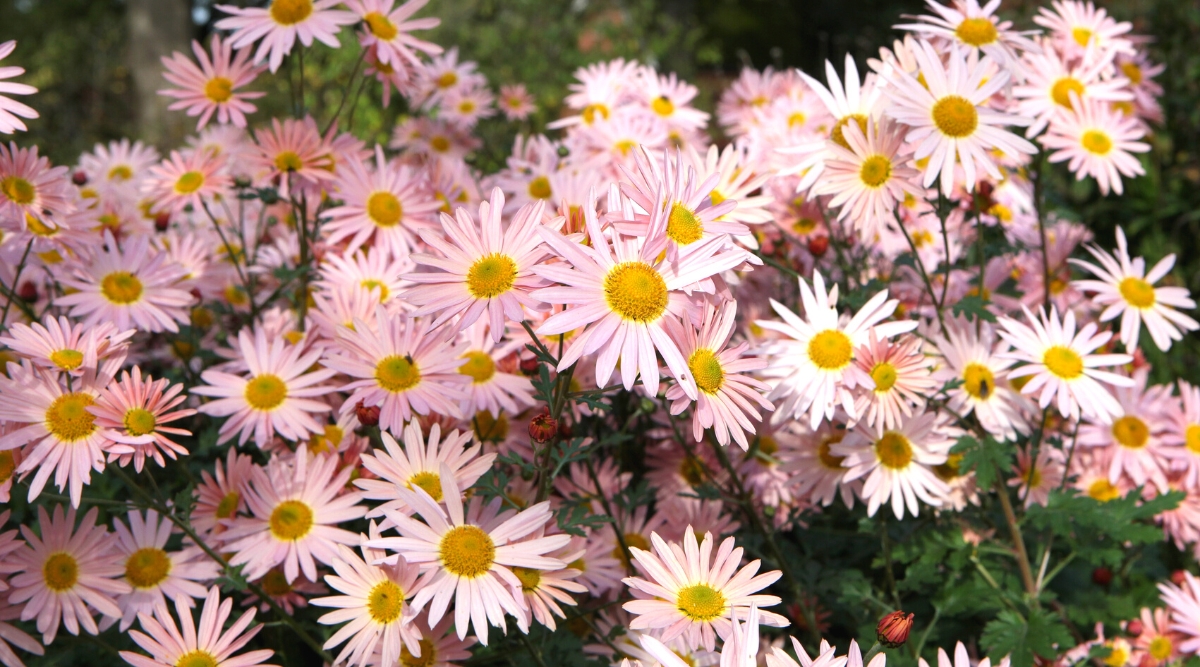
Chrysanthemum ‘Hillside Sheffield Pink’
Scientific Name : Chrysanthemum ‘ Hillside Sheffield Pink ’
Chrysanthemum ‘ Hillside Sheffield Pink ’ is a stalwart mixture of mum that makes a fine addition to the perennial blossom garden . There are many varieties of chrysanthemum , each with its own alone flush colors and forms .
‘ Hillside Sheffield Pink ’ blooms in profusion each fall until the first icing . flower are pollyannaish salmon pink with yellow centre and attract butterfly stroke .
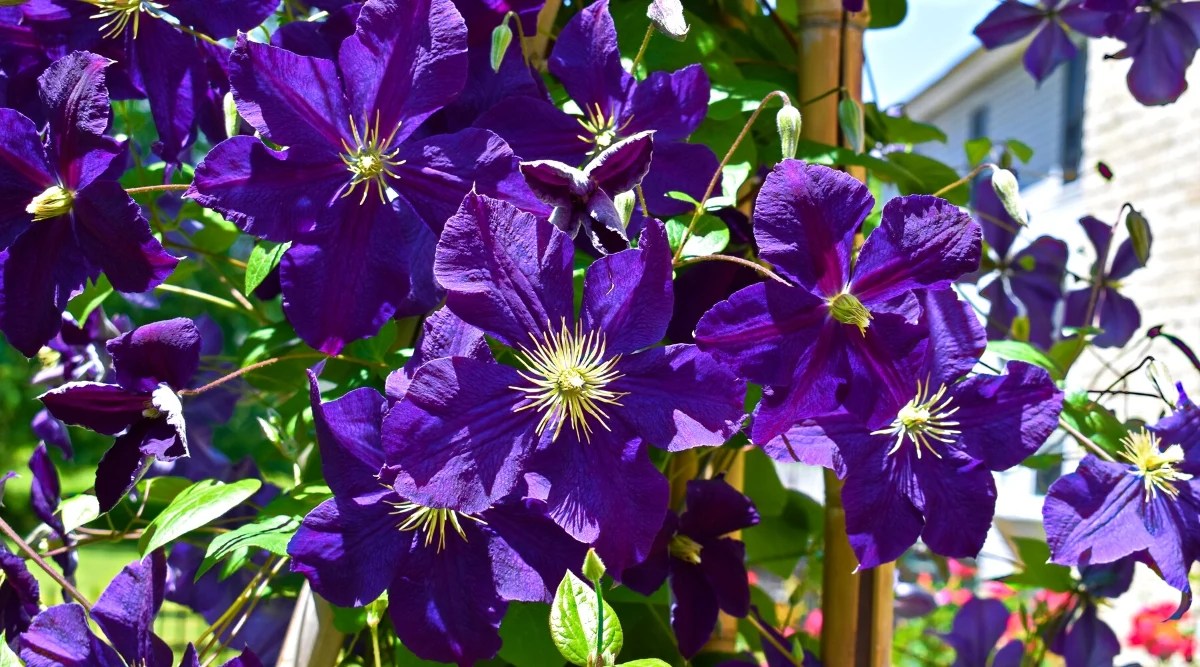
originate chrysanthemums in a sunny blot . They do best with well - drained dirt rich in organic issue and consistently moist . Plants will slowly disperse over time and can be divided every few years , as needed . These plants are resistive to cervid and rabbits .
Clematis ‘Jackmanii’
Scientific Name : Clematis ‘ Jackmanii ’
Clematis ‘ Jackmanii ’ is a climbing vine with many stunning , showy imperial flowers . ‘ Jackmanii ’ blooms each year in mid - summer . This kind of Clematis is an combat-ready climbing iron and involve a treillage , spindle , or fencing to cling to .
It is tolerant to cervid and rabbits . These plant are long - live and , in ideal shape , can live for up to 50 year !

They grow best in areas with full sun but also tolerate some good afternoon shade . Give them a berth with consistently moist grunge and protect the solution with mulch or by planting other shade - providing perennial around them .
Columbine
Scientific Name : aquilege canadensis
Columbine is a wonderful leaping - blossom aboriginal wild flower for the perennial garden . you’re able to establish plants in the declination . The aboriginal species of columbine has red flowers , but many cultivars are available with flowers in sunglasses of regal , pink , and lily-livered . Its flowers are uniquely shaped , dangle downwards , and are quite attractive .
Columbinesattract hummingbirdsbut are resistant to deer and rabbits . In red-hot or gay area , the farewell may wither in the summertime calendar month . If this happens , prune off utter foliage .

Plants will regrow the undermentioned fountain . aquilegia are easy grown from seed and readily ego - seed . plant life will blossom in the 2d class after sprouting and blossom reliably each saltation .
Coral Bells
Scientific Name : Heuchera var .
There are many miscellany of coral bells . These low - growing industrial plant make an fantabulous ground cover for a shade garden or around a rock candy wall .
Depending on the variety , heyday bloom in white , pinkish , and red shades . The leaves also vary in semblance and can be quite showy . Coral bells ’ leafy rosettes will tardily spread over time , creating a mint of greenery . Divide as necessary to control outbound scatter .
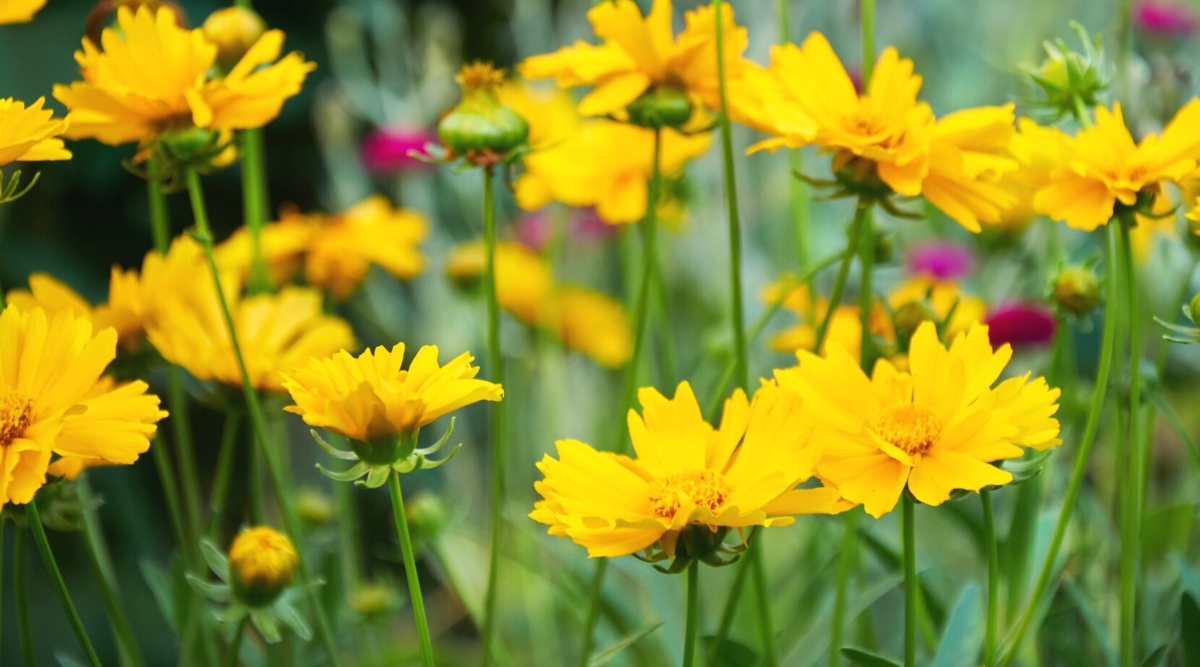
Coral Bell do well in an area with partial shade . Its soil should be moist , rich , and well - drained . use mulchin field with cold wintertime to facilitate protect the roots from frost , but remove fleshy layers of mulch in the spring to further fresh spring growth .
Coreopsis
Scientific Name : Coreopsis lanceolata
There are severalspecies of tickweed , and any would be a fine improver to a recurrent garden . The lanceleaf coreopsis ( C. lanceolata ) is a wildflower aboriginal to the key and eastern United States . This industrial plant has frail feathery leaf and cheery , bright yellow flush that flower throughout the summer .
The heyday are splashy and draw butterflies and other pollinator . Deer and rabbits do n’t loosely rag these plant . tickseed looks great in any perennial garden .

They are not too finicky about soil quality , although they prefer well - drained soil with regular moisture . Plants readily ego - seed , so deadhead spent flowers to prevent excess seedlings , or be disposed to thin out them on a regular basis to control growth .
Cranesbill Geranium
Scientific Name : Geranium sanguineum
This humbled - maintenancegeraniumgrows into attractive chunk . lone pink - purple flower appear from tardy outpouring through early summer , and leaves turn ruby-red in the drop . This works is home in perennial gardens , margin , cottage garden , and rock garden . geranium are resistant to both deer and hare .
The crane’s bill geranium does good in areas with full sun to fond shade . They favour fair - tone grease that is dampish but well - drained . The industrial plant can be quickly grown from seeded player , cuttings , or by division .
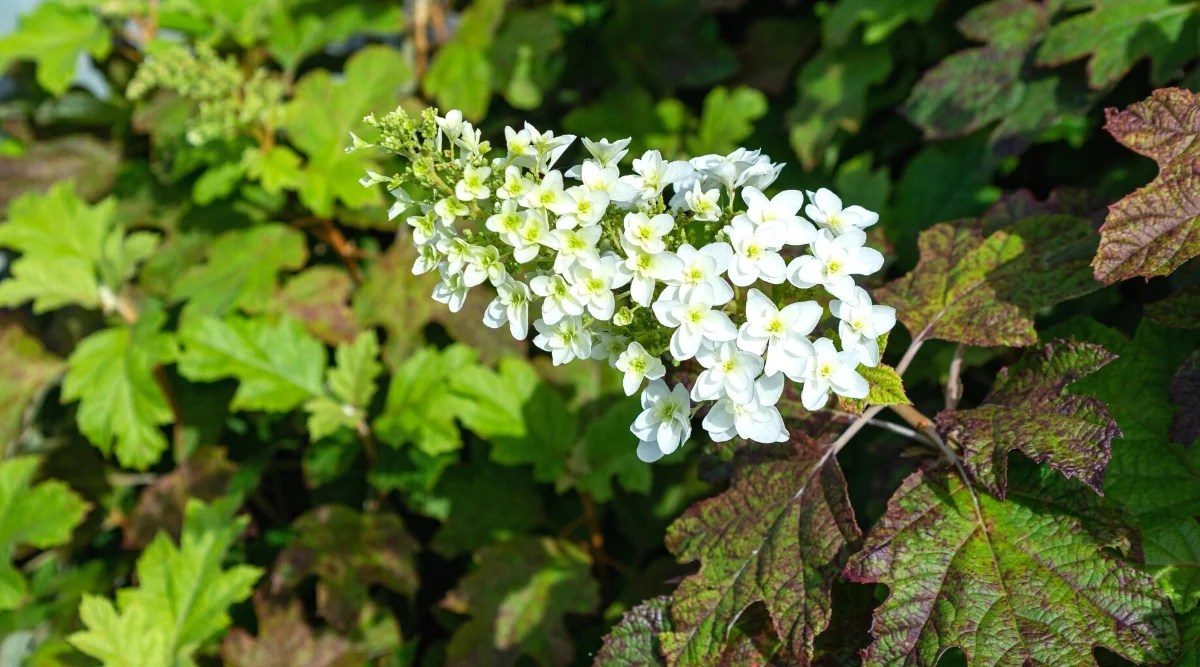
Oakleaf Hydrangea
Scientific Name : Hydrangea quercifolia
Need an attractive native shrub for a sunny to partially shaded region ? Thishydrangeahas gravid , profoundly lobed green leaves and large clusters of clean flush that bloom from late springtime through mid - summertime .
Oakleaf hydrangea is a low - sustenance plant . It favour rich , moist , well - drained dirt . These plant are sensitive to extreme cold and may call for a bit of extra winter mulch in colder climates . The bloom flower on old Grant Wood , so these should be pruned directly after flowering end if pruning is require .
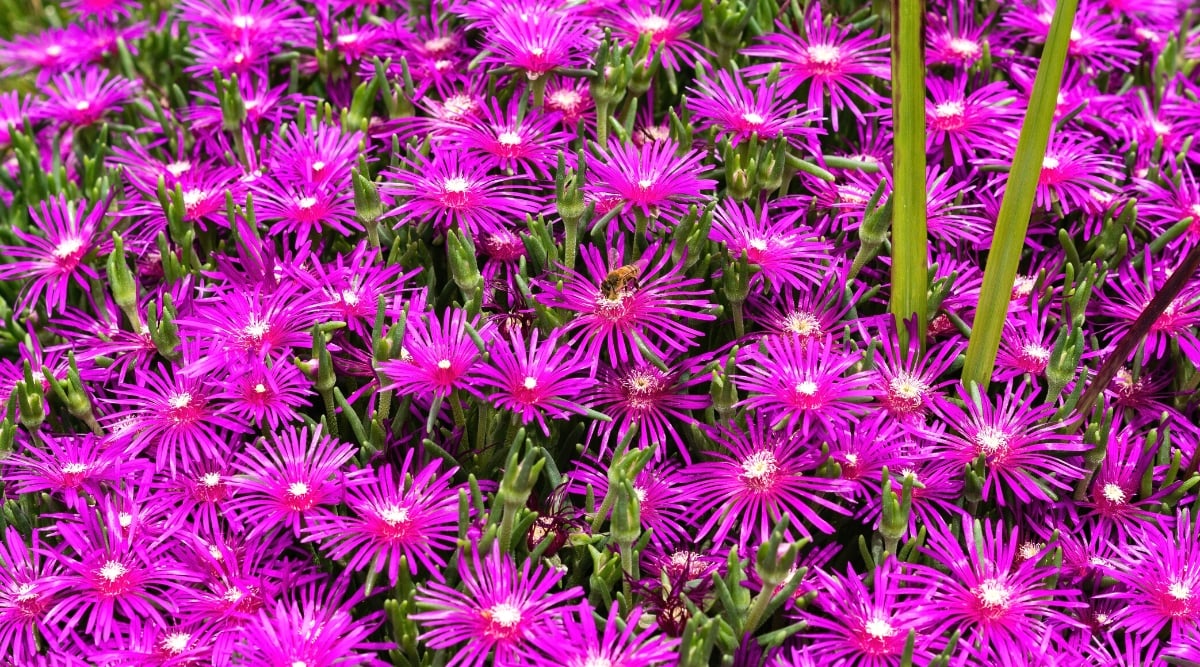
Ice Plant
Scientific Name : Delosperma cooperi
If you live in a warmer climate zone and are looking for an attractive ground cover , consider ice plant . These industrial plant look great in a rock garden or along the edge of a rampart or other border . Delosperma cooperi ’s bloom are showy and vivacious pink , blooming from summertime through early fall . Its leaves are juicy and succulent , and they remain attractive in warm climate throughout the winter .
Ice plants lie with full sun condition . Grow them in teetotal , well - drained grease , as these plant are not large-minded of smashed or soggy ground . cervid and rabbits do n’t generally bother them .

Lantana ‘Miss Huff’
Scientific Name : Lantana camara ‘ Miss Huff ’
Many lantana miscellany are audacious only in the warm clime zones , but ‘ Miss Huff ’ is unfearing to zone 7 . Give it a hard pruning each wintertime after the first frost , and add a layer of winter mulch . In the springtime , the plant life will regrow into a substantial bush . Lantana likes a location with medium - moisture , well - drained grease .
Lantana plants blossom profusely each twelvemonth . From mid - summer through rime , clusters of minuscule multicolor heyday handle the plant life . yellowed , orange , and pink flowers often appear in a exclusive cluster . The leaves are strongly fragrant , and the efflorescence appeal butterflies and hummingbird .
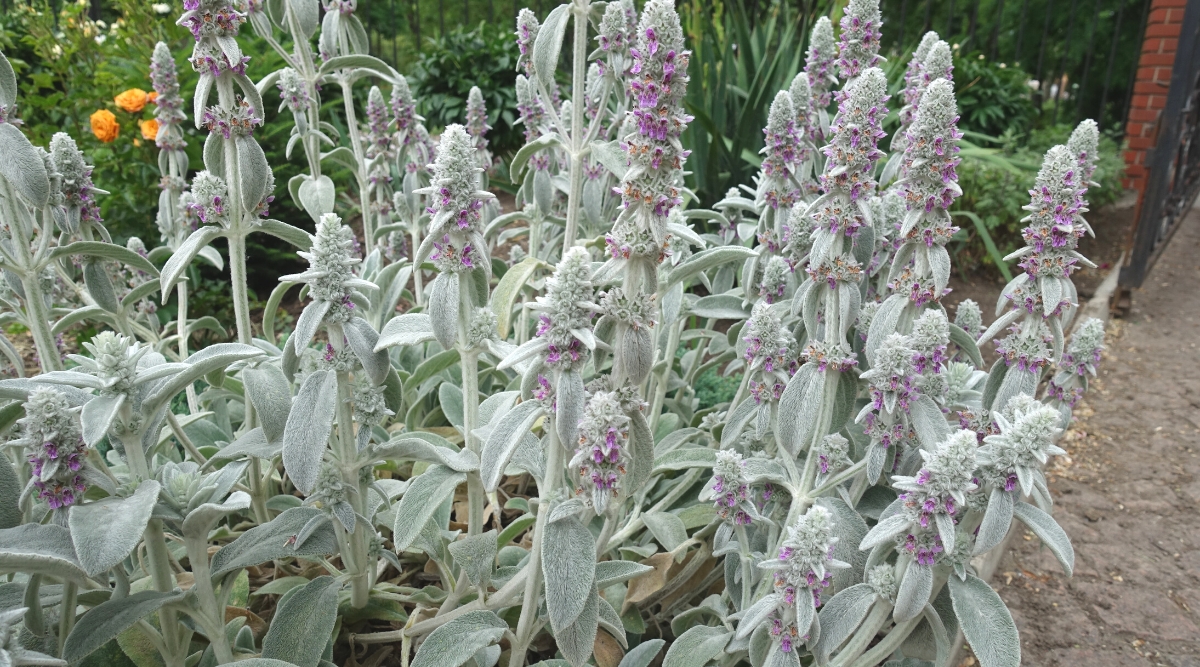
Lambs’ Ear
Scientific Name : Stachys byzantina
Lambs ’ pinna is best recognized for its flabby , blurry leaves . This low - rise plant make an splendid ground covert and can be used as a filler plant for the repeated garden . establish it in corner , along edge , and around borders . This industrial plant slowly spreads and can be divided every few age , as want , to keep it tidy .
Lambs ’ ear is resistant to both rabbits and cervid . This plant does well in average to pathetic - timber dirt as long as the soil is well - drain . It perform best in full sun but may give out back in mid - summertime if it gets too live and dry . take out beat parting to serve better air circulation and reduce the risk of rot .
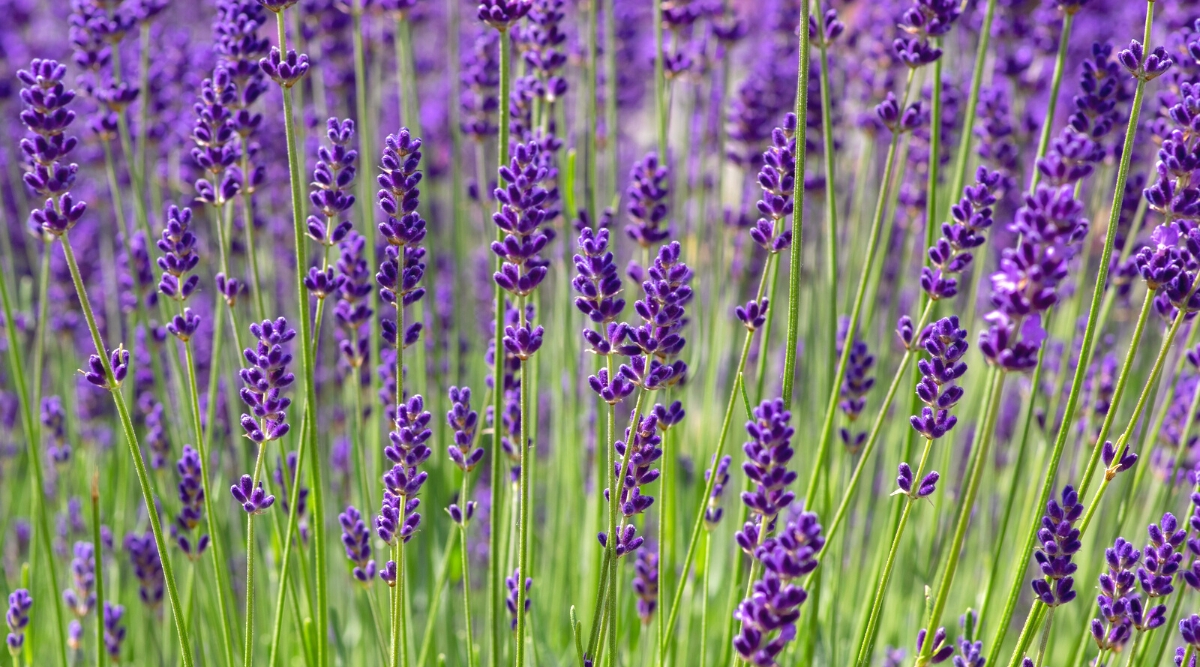
Lavender
Scientific Name : Lavandula angustifolia
lilac , or English lavender , is a woody herb with extremely redolent leaves and flower . The pale majestic spikes bloom in mid - to - late summer , pull in butterfly and other pollinator . Plants are tolerant to deer and hare .
turn lavender in the herbaceous plant garden , repeated garden , or bungalow garden . The plants turn well with full sunlight . Lavender does well in average - caliber soils that are dry to average wet .

Its soil should be well drain because plant are prone to settle rot . Prune lavender every couple of years to encourage fresh , robust growth .
Lenten Rose
Scientific Name : Helleborus orientalis
Lenten come up is a mainstay for the shade garden . These plant life are stalwart and resistant to deer and rabbits . They allow heavy shade and poor soils . Lenten rise will tend to pass around by self - seeding . Divide clumps every few long time , as postulate , to prevent overcrowding .
Lenten arise is an evergreen industrial plant ; its leaf remain green throughout the winter , and the flower come forth in early to mid - spring . All of the flowers are comparatively magnanimous and showy , in tad of pink or blank . This attractive plant is low - maintenance and a welcome addition to the landscape .
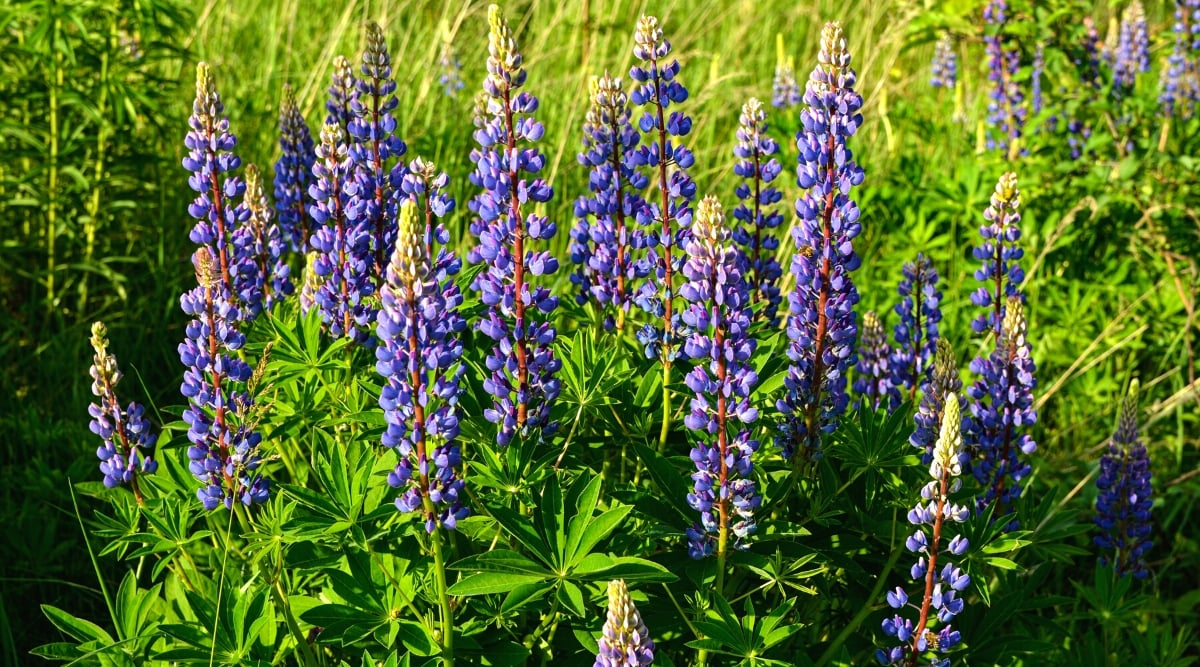
Lupine
Scientific Name : Lupine volt-ampere .
Lupinesgrow well in cooler climates . They are not broad of recollective red-hot summers and high humidity . Many intercrossed salmagundi are well - suit for the recurrent garden . lupine be given to be short - lived perennials or grown as annuals .
The prime appear in late springiness through mid - summer . Tall spike of pea plant - like flowers appear atop large compound leaves . These plants are tolerant to both deer and rabbits , and the flowers appeal butterflies .

Peony
Scientific Name : Paeonia lactiflora
Peony is a classical garden perennial . Many varieties have been developed , each with unique flowers . Peonies blossom from mid to late springtime . The blossom are large and extremely showy . paeony gain from financial backing to keep the large leaves and flowers from leaning toward the ground .
Peonies do well in an area with full sun to partial tad . The soil should be rich , fertile , and well - drained . Keep the roots moist and mulch in the winter to facilitate protect them from freezing . These plant resist rabbits and deer , and their flowers appeal pollinators and butterflies .

Pink Muhly Grass
Scientific Name : Muhlenbergia capillaris
decorative pasture can be a pleasing addition to the perennial garden . pinkish muhly grass is a low - sustenance grass with showy autumn flower . During the summer calendar month , the leaves form a dense , rounded glob . Its flowers appear through mid - to - former fall , creating a beautiful pink haze around the plant .
Pink muhly Mary Jane grows secure in full sun . The grime should be well - drained , with dry to medium moisture , and this industrial plant is kind of sandy , poor - calibre grime . It may spread out by semen , but it generally is not an strong-growing spreader . Deer and rabbits do not rag this Gunter Wilhelm Grass .

Purple Coneflower
Scientific Name : Echinacea purpurea
imperial conefloweris a aboriginal wildflower of the eastern United States . It bloom from mid - summertime through twilight with grandiloquent , showy , pinkish - purple flowers . This hardy perennial is an excellent addition to a pollinator or wildlife garden . Its distinctive peak attract butterflies in the summertime and seeded player - eat fowl in the spill .
over-embellished coneflowers are low alimony and grow near in full sun , but they will tolerate some swooning shade . They grow in average , well - drained soil with low to medium moisture levels . These plants will spread over time by self - seeding , and can be divided every few age to prevent overcrowding .

Russian Sage
Scientific Name : Perovskia atriplicifolia
Russian sage is an attractivesage varietythat looks like it belongs in a desert landscape . It has sick silver green folio and tall spikes of little purple peak that attract various pollinators . The leaves are fragrant when break down . To keep plants neat and stocky , snip severely in later winter to promote fresh ontogeny .
Russian sage grow best in a location with full sun , teetotal ground , and excellent grime drainage . dispirited sustentation , they are resistant to crop cervid and lapin . Once established , these plants are also liberal to drouth and poor dirt .

Shasta Daisy
Scientific Name : Leucanthemum spp .
This classical daisy - like flower has white petals and large yellow centers . The white flowers complement just about any other perennial in the garden . They bloom from betimes through mid - summer and draw butterflies .
This buoyant plant life grows to a medium altitude in full sunlight and moderately dampish soils . cabbage off drop flower to promote more bloom and prune plants back after flowering to encourage bushier growth . private Shasta daisy flora are somewhat short - lived , but they will form clump that can be divided .

Siberian Iris
Scientific Name : Iris sibirica
Siberian irises are hardy and lowly - alimony plants . They grow best in full sun but will allow some tincture , though they may not bloom as well with less light . institute them in a emplacement with average to rich , damp soil . plant will spread outwards by rhizomes , and larger clusters can be easy divided .
There are many variety of Siberian iris . Although many other cultivar exist , classic colors include exclusive whitened , yellow , or purple flower . The Siberian fleur-de-lis is a authentic bloomer from belated spring through former summertime . The blossom have a slight fragrance , and these industrial plant are resistant to deer and rabbits .

Speedwell ‘Georgia Blue’
Scientific Name : Veronica peduncularis ‘ Georgia Blue ’
Many coinage are within the genusVeronica , and several are hardy garden perennial . The veronica bang as ‘ Georgia Blue ’ is a low - growing plant life that makes an excellent ground book binding .
turn it in full sun or a spot with afternoon specter , mean moisture , and well - drained soil . It digest cervid and hare and would reckon very nice as a border plant or in a sway garden .
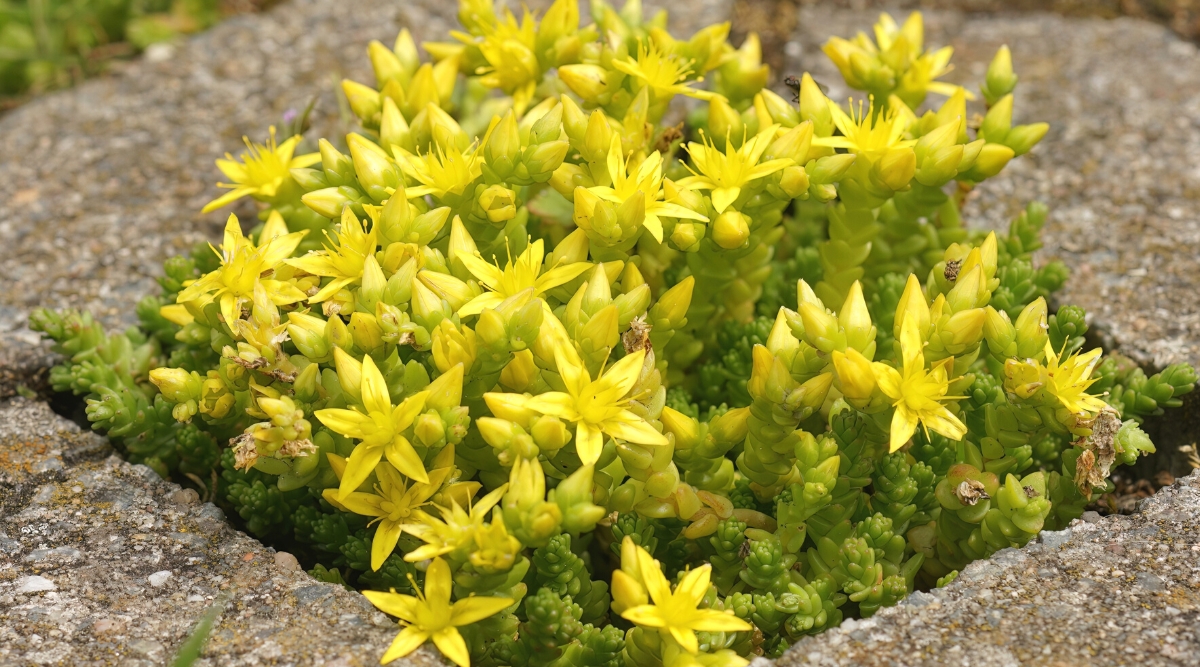
‘ Georgia Blue ’ has pretty purple - drear flowers , each with four flower petal . It blooms primarily in spring but may originate a few extra blooms throughout the summer . In the fall , the leaves turn inscrutable reddish brown before dying back for the wintertime .
Stonecrop
Scientific Name : Sedum acre
Stonecrop , or moss stonecrop , is one of many varieties ofSedum . This particular metal money is a very easy - to - grow , low - maintenance perennial . It makes an fantabulous ground cover for a rock garden or mete . These plant farm best in full sun with average intermediate - dry stain .
Moss stonecrop blooms reliably each spring . The flowers are pocket-size and chicken , growing in clump atop taller stem . Their modest gullible succulent farewell are evergreen and expect fresh throughout wintertime . This stonecrop is tolerant to both deer and lapin and is easily propagated by settle down stem sections .
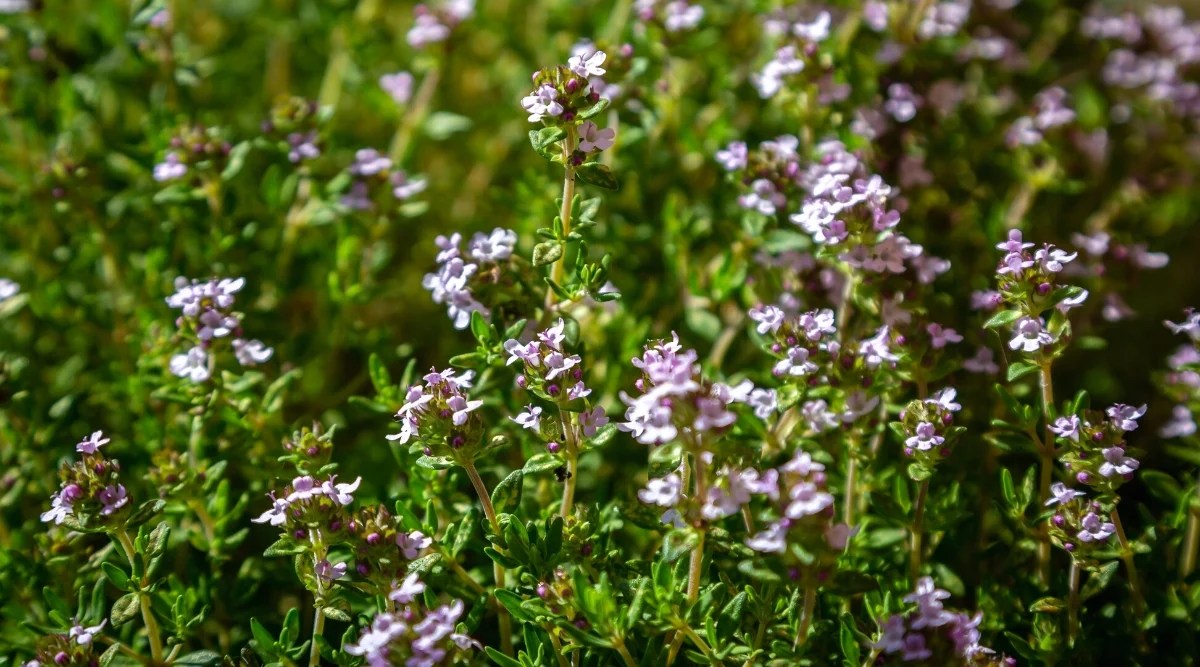
Thyme
Scientific Name : Thymus spp .
Thyme is a conversant garden herb and an excellent addition to the recurrent garden . There are many dissimilar mintage and cultivars ; many are evergreen , slightly woody - stemmed , and creeping undercoat covers , but not all . parting are fragrant , and the small-scale flowers typically attract butterflies and other pollinator . Thyme is not bothered by browsing deer or lapin .
Thyme grows well in juiceless to medium soil . Its soil should be well - drained and allowed to dry between waterings . Thyme spreads freely by fawn and can be cut back periodically to control growth and exert a dense , lusher appearance .
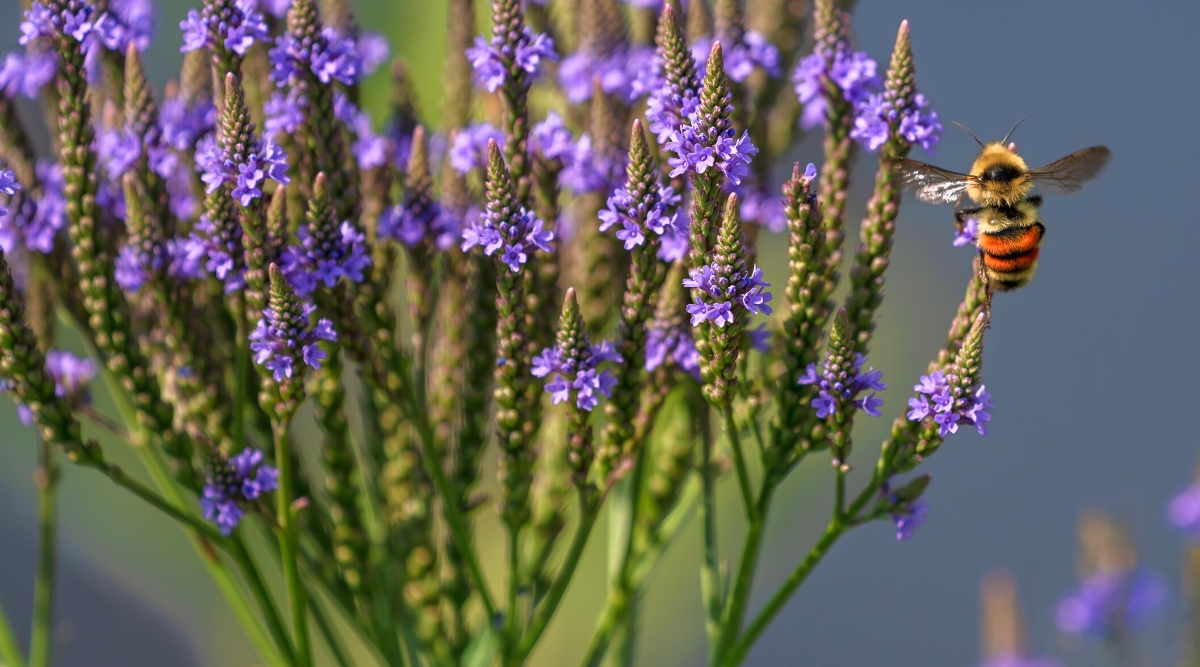
Vervain
Scientific Name : Verbena hastata
Vervain , or blue verbena , is an attractive aboriginal plant that would make a endearing addition to a perennial , wildflower , or butterfly garden or in many moist naturalized area . It blooms from mid to late summertime and attract butterflies and other pollinator . verbena ’s heyday are flamboyant spikes of small purple efflorescence .
acquire vervain in a location with full sun , but it tolerates mottled shade . This works tolerates moist to wet soil and does not require much maintenance . It will spread by moon curser and self - seeding , so give it plenty of space or be prepared for even thinning .
Final Thoughts
crepuscule is an excellent time to institute perennial . Do a moment of procession provision to become intimate with the sunshine , grunge quality , and dirt moisture at your internet site , then take plants that will perform well in your local environmental conditions .
If you have room for multiple plant , try avariety of colors and blooming timesto make a varied garden with yr - round of drinks blooms . An established perennial garden does n’t expect much steady maintenance and can pull in many butterfly , birds , and other wildlife . well-chosen horticulture !